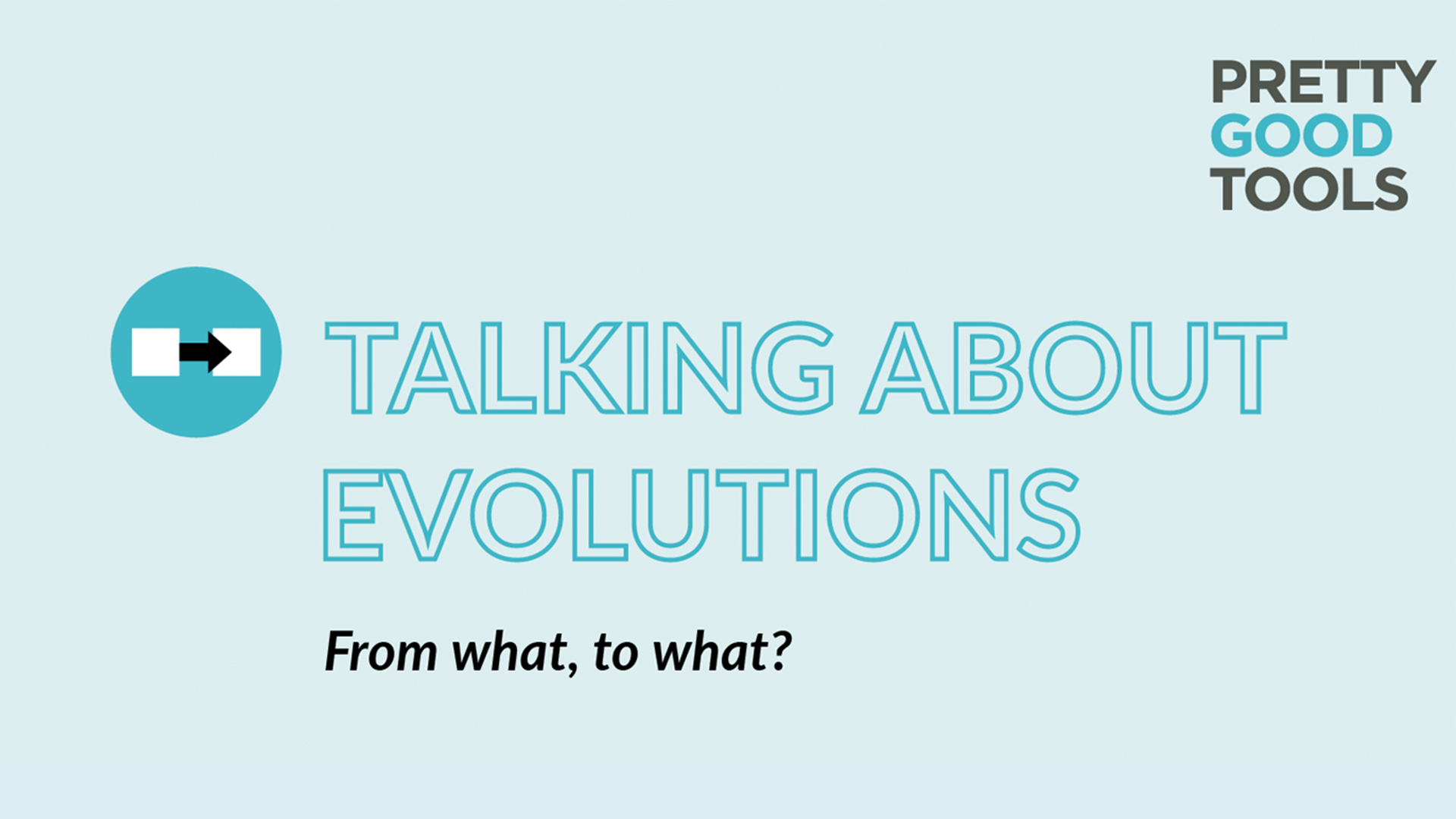
Everything is in process. But our ways of thinking about organizational development often don’t account for that. Our tools can be static, designed to look at single slices of time, where things are right now rather than where they’ve been and where they’re headed. To help our clients think in terms of ongoing change, The Giving Practice developed the “Talking About Evolutions” exercise. How is your organization, team, project, strategy or field evolving—from what to what?
Our prediction: The process of thinking about evolutions will galvanize your group. We have seen it happen again and again.
This new Pretty Good Tool shows you how to do an evolutions exercise that has helped our clients get a big-picture perspective on their work. The steps are straightforward. First, ask people to fill in the blanks: we are evolving from (what, in the past) to (what, in the future). Then write each evolution on a sticky note and post the evolutions. Finally, reflect as a group, making meaning together of the shifts identified and their implications.
Clients have found it fun and fruitful:
“For our board, this exercise helped to crack open their big-picture thinking as well as illuminate the history, characteristics, and capacities of our organization.”
“This exercise was incredibly helpful to our board of directors and staff as we moved through the process of designing our strategic framework for the next three years.”
“It allowed us to embrace the change we are living into and honor the past. And I enjoyed how versatile it could be.“
Why is naming evolutions such a useful exercise? Five reasons:
- It helps you notice gradual change where you might not have before. “Your brain has a bug,” NPR Science Correspondent Shankar Vedantam says. “It pays attention to things that change quickly, not that change slowly.” Incremental change is often the name of the game in social sector work. As with biological evolution, big shifts can be missed if your view is too close.
- Focusing on ongoing evolutions frees you from thinking statically and feeling stuck. We find that organizations come up with strategies that work when they can see themselves as dynamic objects in motion, focusing less on what they are and more on what they are becoming. “I find the great thing in this world is not so much where we stand,” Oliver Wendell Holmes once said, “as in what direction we are moving.”
- It provides a broader, longer-term, and often uplifting perspective on your work. Clients often come away from the exercise recognizing that they’ve made more progress over time than they had realized and in turn aiming for higher future goals.
- It allows you to think in terms of stories, which as humans we’re programmed—and happy—to do. Understanding the evolving story of your organization, team or project can help you see it in context and better understand the range of factors shaping your work.
- It is flexible, designed to help you focus on any kind of evolution, from concrete to cosmic. We encourage groups to go with whatever kinds of evolutions strike them as important, and in the same exercise we’ll see groups reckon with a practical evolution like “5 staff to 10 staff” and a metaphoric evolution like “Loose-knit to Tapestry.”
Give it a try and tell us what you think!